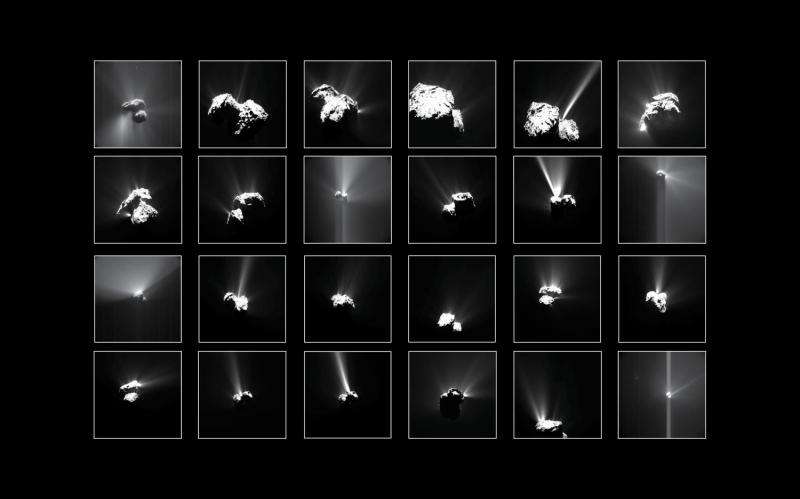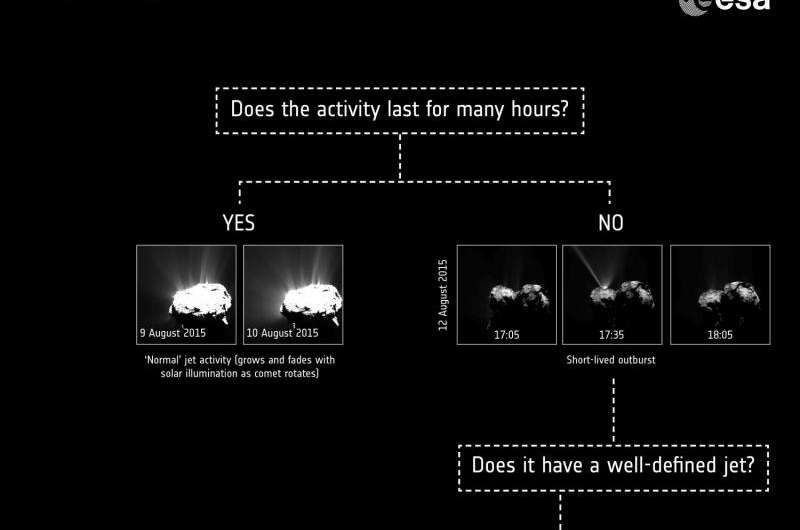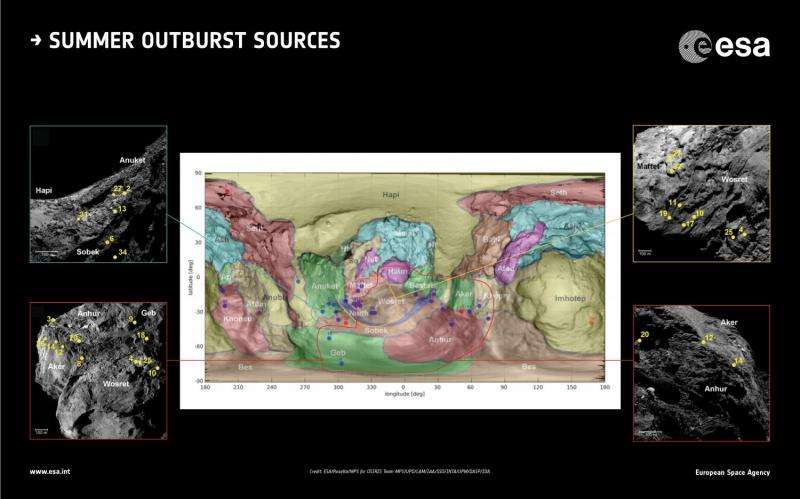Summer fireworks on Rosetta's comet

Brief but powerful outbursts seen from Comet 67P/Churyumov–Gerasimenko during its most active period last year have been traced back to their origins on the surface.
In the three months centred around the comet's closest approach to the Sun, on 13 August 2015, Rosetta's cameras captured 34 outbursts.
These violent events were over and above regular jets and flows of material seen streaming from the comet's nucleus. The latter switch on and off with clockwork repeatability from one comet rotation to the next, synchronised with the rise and fall of the Sun's illumination.
By contrast, outbursts are much brighter than the usual jets – sudden, brief, high-speed releases of dust. They are typically seen only in a single image, indicating that they have a lifetime shorter than interval between images – typically 5–30 minutes.
A typical outburst is thought to release 60–260 tonnes of material in those few minutes.
On average, the outbursts around the closest approach to the Sun occurred once every 30 hours – about 2.4 comet rotations. Based on the appearance of the dust flow, they can be divided into three categories.
One type is associated with a long, narrow jet extending far from the nucleus, while the second involves a broad, wide base that expands more laterally. The third category is a complex hybrid of the other two.

"As any given outburst is short-lived and only captured in one image, we can't tell whether it was imaged shortly after the outburst started, or later in the process," notes Jean-Baptiste Vincent, lead author of the paper published today in Monthly Notices of the Astronomical Society .
"As a result, we can't tell if these three types of plume 'shapes' correspond to different mechanisms, or just different stages of a single process.
"But if just one process is involved, then the logical evolutionary sequence is that an initially long narrow jet with dust is ejected at high speed, most likely from a confined space.
"Then, as the local surface around the exit point is modified, a larger fraction of fresh material is exposed, broadening the plume 'base'.
"Finally, when the source region has been altered so much as not to be able to support the narrow jet anymore, only a broad plume survives."

Provided by European Space Agency





















